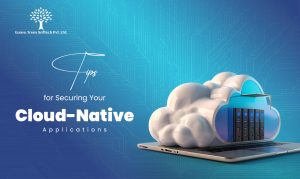Our comprehensive SDLC (Software Development Life Cycle) support services encompass every phase of software development, ensuring that projects are meticulously planned, executed, and maintained to meet client needs and industry standards.
Comprehensive SDLC (Software Development Life Cycle) Support Services encompass end-to-end assistance for every stage of software development. This service includes everything from initial project planning and requirements gathering through development, testing, deployment, and ongoing maintenance. For companies looking to create robust, adaptable, and high-quality software, comprehensive SDLC support provides a reliable approach that ensures all necessary phases are executed with precision. It is a full-scope service that not only builds the software but also lays the foundation for its ongoing success, adaptability, and alignment with changing business requirements.
These services make it possible to turn complex ideas into software that is both functional and future-proof, offering organizations a valuable asset for their operations.
Comprehensive SDLC support ensures that each phase of software creation is managed with a focus on quality, efficiency, and alignment with business objectives, allowing organizations to maximize their software’s value and longevity.
Our comprehensive SDLC (Software Development Life Cycle) support services encompass every phase of software development, ensuring that projects are meticulously planned, executed, and maintained to meet client needs and industry standards. We provide end-to-end SDLC services that cover requirements gathering, design, development, testing, deployment, and ongoing maintenance. Our team leverages best practices and proven methodologies, such as Agile, Waterfall, and DevOps, to deliver high-quality software solutions that align with our clients’ business objectives.
Comprehensive SDLC support services provided by us, benefit clients in the following ways:
Comprehensive Project Management
- Covers all stages of software development, ensuring complete visibility and control over the process.
- Reduces risks associated with scope creep and miscommunication between stakeholders.
High-Quality Deliverables
- Each phase involves rigorous planning, testing, and review, resulting in robust and error-free solutions.
- Quality assurance and automated testing ensure the software meets performance expectations.
Faster Time to Market
- Agile frameworks and DevOps practices speed up development cycles through continuous delivery.
- Full SDLC support helps identify and mitigate roadblocks early, accelerating project completion.
Improved Collaboration and Communication
- Involves multiple stakeholders, ensuring clear communication between developers, testers, designers, and clients.
- Regular feedback loops ensure alignment with evolving requirements and goals.
Cost-Effective Development
- Early detection of issues through proper planning and testing helps avoid costly fixes post-deployment.
- Efficient resource management ensures optimized costs without compromising quality.
Seamless Maintenance and Updates
- Full SDLC support ensures smooth transition to post-launch support, including bug fixes, updates, and feature enhancements.
- Enables continuous improvement through regular monitoring and user feedback.
Reduced Operational Risks
- Full support integrates security practices at every stage, minimizing vulnerabilities.
- Rigorous documentation and version control ensure compliance with industry standards and regulations.
Contac Us








